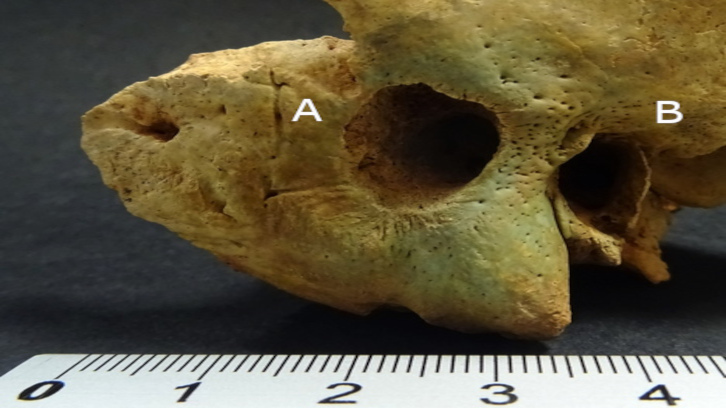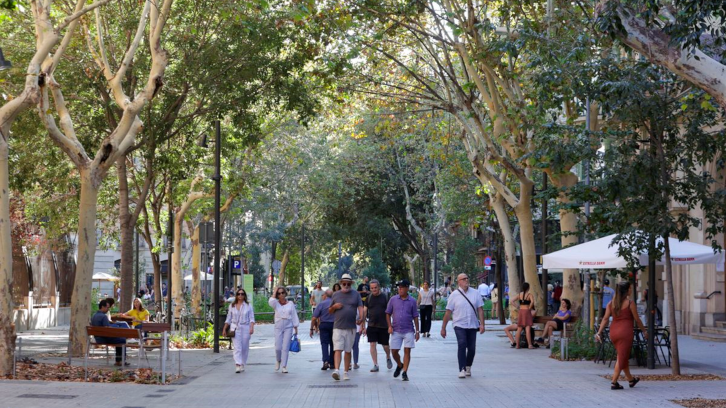Paleo-otological record reveals new data on medieval medicine

If not treated in time, a middle ear infection can cause severe damage to the middle ear structures and the skull's mastoid bone, and ultimately perforate it. What was the medical and pharmacological knowledge available to treat a disease of these characteristics within the context of the middle ages? In this article, researchers from the Department of Sciences of Antiquity and the Middle Ages, and the Department of Surgery of the UAB, in collaboration with other universities, present a summary of their work in which they analyze the skull of an approximately 12-year-old individual with an injury that could be attributed to such complications. The different interpretations of the results incorporate new data to the paleo-otological record in the field of medieval medicine.
Otitis media is a common disease in infants and children usually treated with antibiotics. Its development was equally usual in past populations, which could not count on antibiotics and thus, could more easily develop complications. However, the bony structures of the middle ear are usually badly preserved and difficult to observe. Moreover, the interpretation of the possible lesions that can be drawn out of these observations is not without challenges.
A perforation of c. 12mm of maximum diameter was found in the cranium of an approximately 12-year-old individual from Vall d’Uixó (Castelló, Spain) that was inhumated with the Islamic ritual. This perforation (A) was placed right behind the opening of the right ear (B) and was surrounded by a green colouration on the bone. Radiographs of the cranium indicated the possible presence of mastoiditis, a complication of otitis media that occurs when the aerial cells of the mastoid apophysis are filled by pus. Similarly, microscopic observation of the bony structures of the middle ear showed changes compatible with a severe infection. The characteristics of the perforation could be indicative of a mastoidectomy, a surgical intervention that is still performed nowadays to treat mastoiditis. Alternatively, it could also be the result of an abscess that the body produced in order to secrete the pus that was being accumulated on the mastoid apophysis; it is also possible that the perforation is the result of a combination of both, that is, a surgical intervention on an area that already presented an abscess.
On the other hand, regarding the green colouration found around the perforation, it was not present on the left ear, and could be interpreted as the application of a cataplasm infused with copper acetate, known as Verdigris at the time, to treat the wound. Copper acetate is mentioned in various medieval medical treatises, especially in those written by Muslim doctors, as a substance that can be used to treat wounds, ease their cicatrisation, and prevent infections.
The observed lesion and its possible interpretations are unusual and represent an exciting contribution to the paleopathological record that can help in the identification of future cases, regardless of their chronology. Moreover, they present interesting implications for the understanding of medical knowledge, pharmacology, and medical access in the Iberian Peninsula and the medieval Islamic world.
Júlia Olivé-Busom1, Helena Kirchner1 Olalla López-Costas2, 3, 4, Miquel Quer-Agustí5 Nicholas Márquez-Grant6
1Departament de Ciències de l’Antiguitat I l’Edat Mitjana, Universitat Autònoma de Barcelona,
2Group EcoPast (GI-1553), Universidade de Santiago de Compostela, Santiago de Compostela.
3Archaeological Research Laboratory, Stockholm University, Wallenberglaboratoriet.
4Laboratorio de Antropología Física, Facultad de Medicina, Universidad de Granada.
5Departament de Cirurgia Àrea d'Otorrinolaringologia, Universitat Autònoma de Barcelona.
6Cranfield Forensic Institute, Cranfield University, Defence Academy of the United Kingdom.
References
Júlia Olivé-Busom, Olalla López-Costas, Miquel Quer-Agustí, Nicholas Márquez-Grant, Helena Kirchner, Evidence of otitis media and mastoiditis in a Medieval Islamic skeleton from Spain and possible implications for ancient surgical treatment of the condition, International Journal of Paleopathology, Volume 32, 2021, Pages 17-22, https://doi.org/10.1016/j.ijpp.2020.10.009.


